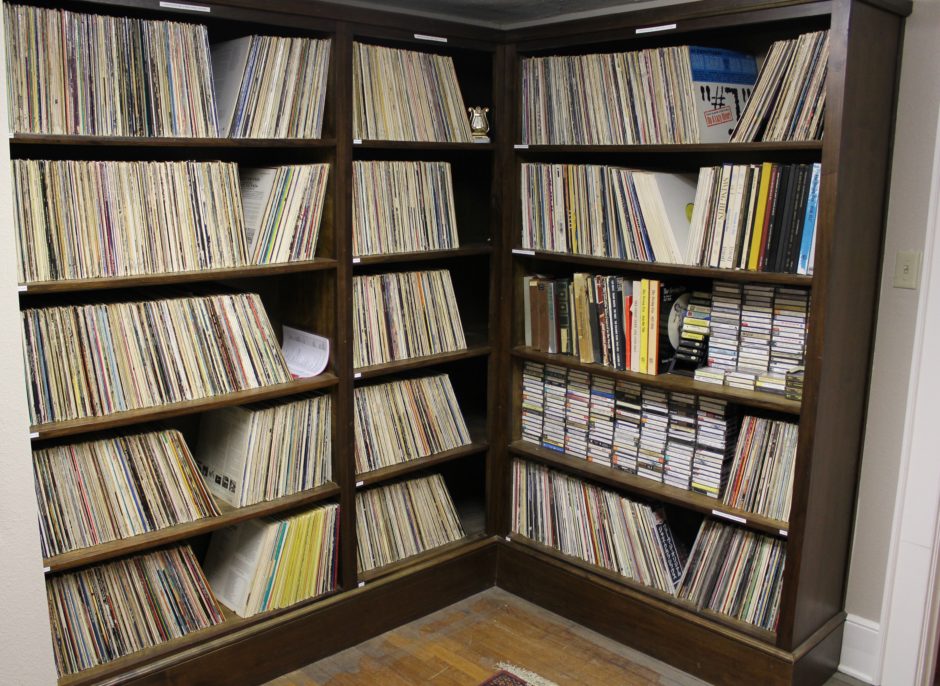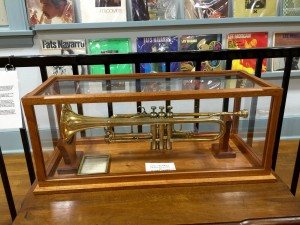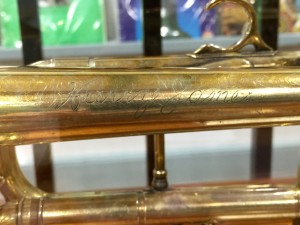I had been reading books on jazz musicians since I had decided to retire from professional trumpet playing to start a jazz museum. Since jazz history was not yet a college course when I was in school, I knew I needed to catch up on the jazz musicians before 1966, when I started getting serious about listening to jazz records.
I was reading a book on the life of Harry James (1916-1983) in 2006 when I heard that a trumpet once owned and played by Harry was going to be in an auction by Heritage Auction Galleries in Dallas. It was really strange to me that this trumpet would appear while I was reading that book. I had been thinking I needed one of his trumpets in our museum, but finding one for sale was, and is, rare. It showed up just when I was thinking I needed one!
My dad was still alive and was a big Harry James fan, so I convinced my dad to help me buy it, even though I had no idea how much it would sell for at the auction. I drove to Dallas a few days before the auction to look at the trumpet because I would be bidding at home online. It was the real deal. I learned that Harry had the valves set back farther on his horn than a normal trumpet because his arms were so long. You might notice that in the picture above. Also, his name was inscribed on the bell. I knew I had to have that horn for the museum which was still only in the formative stages. How can you have a jazz museum without Harry James being represented?
There was one complication I saw in the auction. They were also selling a Benny Goodman clarinet Benny had played in 1935! Having both would be my dream, but I couldn’t talk my dad into letting me bid on it. He gave me a budget that wouldn’t include both, and I knew he wanted the Harry James trumpet. Because of my limited funds, I started to see that we may be headed toward just a jazz trumpet museum. That would be fine with me—I just wanted to have a jazz museum.
There were quite a few bids on the trumpet, but I prevailed, going against another bidder for what seemed like forever. His trumpet and the Goodman clarinet sold for almost the same amount, so there was no way I could have gotten both. They each went for almost 30k. Even so, I knew we now had two very collectible trumpets for the museum, a Dizzy Gillespie and a Harry James trumpet. We were on our way to being more than just a record museum. I finished reading the Harry James book thinking about how interesting the timing was on all of this. It wouldn’t be the last time the Harry James name would play a part in our museum. Later that year we would be contacted by Harry James, Jr., and, instinctively, I knew it would not be about music.


